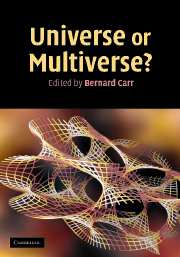Book contents
- Frontmatter
- Contents
- List of contributors
- Preface
- Acknowledgements
- Editorial note
- Part I Overviews
- 1 Introduction and overview
- 2 Living in the multiverse
- 3 Enlightenment, knowledge, ignorance, temptation
- Part II Cosmology and astrophysics
- Part III Particle physics and quantum theory
- Part IV More general philosophical issues
- Index
- References
2 - Living in the multiverse
Published online by Cambridge University Press: 05 July 2014
- Frontmatter
- Contents
- List of contributors
- Preface
- Acknowledgements
- Editorial note
- Part I Overviews
- 1 Introduction and overview
- 2 Living in the multiverse
- 3 Enlightenment, knowledge, ignorance, temptation
- Part II Cosmology and astrophysics
- Part III Particle physics and quantum theory
- Part IV More general philosophical issues
- Index
- References
Summary
Opening talk at the symposium Expectations of a Final Theory at Trinity College, Cambridge, 2 September 2005
Introduction
We usually mark advances in the history of science by what we learn about nature, but at certain critical moments the most important thing is what we discover about science itself. These discoveries lead to changes in how we score our work, in what we consider to be an acceptable theory.
For an example, look back to a discovery made just one hundred years ago. Before 1905 there had been numerous unsuccessful efforts to detect changes in the speed of light, due to the motion of the Earth through the ether. Attempts were made by Fitzgerald, Lorentz and others to construct a mathematical model of the electron (which was then conceived to be the chief constituent of all matter) that would explain how rulers contract when moving through the ether in just the right way to keep the apparent speed of light unchanged. Einstein instead offered a symmetry principle, which stated that not just the speed of light, but all the laws of nature are unaffected by a transformation to a frame of reference in uniform motion. Lorentz grumbled that Einstein was simply assuming what he and others had been trying to prove. But history was on Einstein's side. The 1905 Special Theory of Relativity was the beginning of a general acceptance of symmetry principles as a valid basis for physical theories.
- Type
- Chapter
- Information
- Universe or Multiverse? , pp. 29 - 42Publisher: Cambridge University PressPrint publication year: 2007
References
- 33
- Cited by



